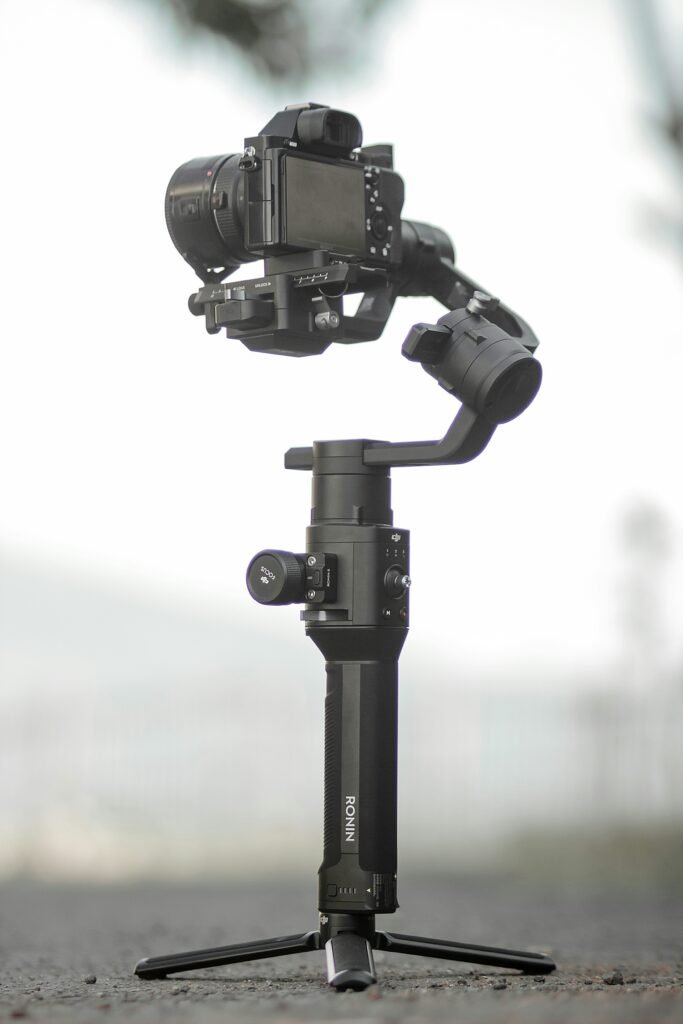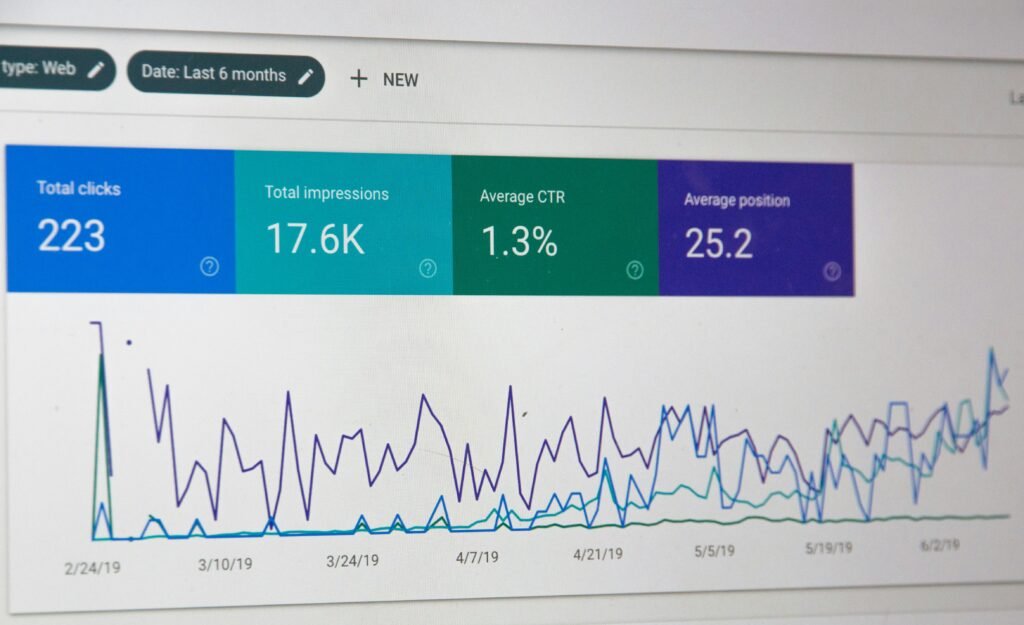
Introduction to Gimbal Cameras
Gimbal cameras represent a significant advancement in the realm of video capture technology. Designed to stabilize camera movements, gimbals utilize a system of motors and sensors to ensure that the camera remains steady, even when the operator is in motion. This stabilization is crucial for producing smooth, high-quality video footage, particularly in dynamic shooting environments or when filming action scenes. The essence of a gimbal lies in its ability to counteract unwanted shakes and vibrations caused by the videographer’s movements, allowing for various filming techniques that would otherwise be difficult to achieve.
The popularity of gimbal cameras has surged in recent years, particularly among videographers, filmmakers, and content creators. As the demand for high-quality visual content continues to escalate, professionals and hobbyists alike are recognizing the advantages of using gimbals to enhance their work. This surge in interest can be attributed not only to the technological improvements in gimbal camera design but also to the pervasive influence of social media platforms where video content thrives. Engaging and visually captivating videos have become a staple on platforms such as YouTube and Instagram, driving creators to adopt innovative filming tools like gimbal cameras.
Furthermore, these devices are versatile and compatible with a wide range of cameras, from smartphones to mirrorless systems, broadening their appeal across different levels of expertise. As we move towards 2025, the evolution of gimbal cameras is anticipated to continue, with enhancements in stabilization algorithms, battery life, and user interface design. These advancements will likely further solidify gimbal cameras as essential tools for anyone serious about video production, ensuring that smooth, high-quality footage becomes the standard rather than the exception.
Key Features to Consider When Choosing a Gimbal Camera
When selecting a gimbal camera in 2025, several essential features warrant careful consideration to ensure the best user experience and performance. A primary aspect is stabilization technology. The effectiveness of a gimbal camera largely depends on its ability to provide smooth shots, even in challenging conditions. Look for models that employ advanced three-axis stabilization systems, which not only compensate for hand movements but also reduce other types of unwanted vibrations, resulting in professional-quality footage.
Another critical feature to assess is battery life. Gimbal cameras are often used in dynamic environments, where extended operational times are necessary. It is advisable to choose a model that offers long-lasting battery performance, as this will enable extended filming without interruptions. Many modern gimbal cameras now feature USB-C charging, allowing for flexible power options on-the-go, further enhancing user convenience.
Weight and portability should also factor into your decision-making process. A lightweight gimbal camera is generally easier to handle, especially for long shooting sessions or when traveling. Consider designs made from durable yet lightweight materials to balance both functionality and ease of transport. Moreover, compatibility with various camera models is crucial. Ensure that the gimbal supports the camera models you intend to use, as this can greatly influence the overall effectiveness of your setup.
Intuitive controls are essential for seamless operation. Look for a gimbal camera with a user-friendly interface that allows for easy adjustments in settings while on the move. Additional functionalities, such as tracking modes and app integrations, can greatly enhance versatility. Tracking modes facilitate dynamic shooting by allowing the gimbal to follow moving subjects automatically, while app integrations can further expand your creative possibilities.
The Rising Trends in Gimbal Cameras for 2025
As we look forward to 2025, the world of gimbal cameras is rapidly transforming due to various technological advancements and shifting consumer preferences. One of the most significant trends in gimbal camera technology is the development of enhanced stabilization systems. Manufacturers are investing heavily in improving these systems, utilizing advanced algorithms and more sophisticated motors to ensure even smoother video capture. This is particularly important for professionals and enthusiasts aspiring to produce cinematic-quality footage, as it minimizes the effects of camera shake, even in dynamic shooting scenarios.
Another notable trend is the integration of artificial intelligence (AI) into gimbal camera systems. With AI capabilities, gimbals are becoming smarter, enabling features such as auto-tracking, subject recognition, and scene analysis. These improvements not only simplify the shooting process but also enhance creative possibilities by allowing users to focus entirely on their artistic vision without worrying about technicalities.
Moreover, enhanced shooting modes are gaining traction among gimbal camera users, catering to their diverse filming needs. Manufacturers are introducing features like hyper-lapse, time-lapse, and cinematic panning modes, which provide users with versatile options to capture stunning footage. This is particularly appealing for content creators who wish to explore various storytelling styles and engage with their audience more effectively. Additionally, the demand for improved mobile compatibility is becoming increasingly apparent. As smartphones continue to dominate the photography and videography landscape, gimbal manufacturers are responding by designing products that seamlessly connect with smartphones. This trend reflects a broader shift toward creating user-friendly devices that can cater to a wider range of consumers, from casual users to professional videographers.
Overall, these rising trends indicate a promising future for gimbal cameras in 2025, with continuous enhancements expected to meet and exceed consumer expectations.
Top Gimbal Cameras Expected to Launch in 2025
The year 2025 is anticipated to be a landmark in the world of gimbal cameras, with several brands unveiling innovative models that promise to elevate the art of videography. Among these, the Canon EOS R5 Mark II stands out, offering enhanced stabilization features and an advanced autofocus system. Designed specifically for professional filmmakers, this model is expected to provide superior image quality, both in still photography and video recording. Additionally, its integration with Canon’s ecosystem, including RF lenses, is expected to enhance versatility and ease of use.
Another noteworthy contender is the Sony A7 IV Gimbal Camera, which is projected to incorporate improved sensor technology and real-time tracking capabilities. This camera aims to cater to both enthusiasts and professionals who seek quality and performance. Its compact design paired with exceptional battery life makes it perfect for on-location shooting, particularly in action-packed environments where stability is crucial.
The increasing demand for portable, high-quality imaging solutions has also led DJI to focus on the development of its Osmo series, with the upcoming DJI Osmo Pocket 3. This model will potentially feature upgraded stabilization algorithms and 4K video capabilities, making it a fantastic choice for vloggers and content creators who require a lightweight and efficient tool for dynamic shooting conditions.
Additionally, Panasonic is rumored to be launching the Lumix G100 II, targeting the travel and lifestyle segment with its robust, compact design. It is expected to deliver impressive image quality and an intuitive interface, making it suitable for casual users and professionals alike. With each of these gimbal cameras set to hit the market, 2025 promises exciting advancements that are likely to redefine the standards of camera stabilization and overall performance.
Comparative Analysis of Existing Gimbal Cameras
As of 2023, the market for gimbal cameras has seen significant growth, with several models standing out in terms of performance, pricing, and overall user satisfaction. One prominent contender is the DJI Ronin SC. Renowned for its lightweight design, this gimbal camera excels in dynamic shooting, offering impressive stabilization capabilities, and is priced around $439. User feedback highlights its intuitive controls and compatibility with a variety of camera systems, which enhances its value for both amateur and professional videographers.
Another noteworthy model is the Zhiyun Crane 3 Lab. Priced at approximately $999, it is designed for heavier cameras and provides advanced features like the TransMount PowerPlus Battery Pack, which empowers filmmakers with extended shooting time. Reviews indicate a steep learning curve for beginners; however, many professionals appreciate its array of features, which include motion time-lapse and object tracking capabilities. This model stands out as a premium option for those who prioritize versatility and professional-grade quality.
The FeiyuTech AK2000 is also worthy of mention, offering a competitive price point of around $599. Its notable feature is the OLED display providing real-time feedback on settings and battery life, which greatly simplifies usability. Users commend its solid build and excellent stabilization during active shoots, albeit some reported that the control software could use improvements. This gimbal is particularly appealing for videographers seeking an efficient balance between affordability and functionality.
In reviewing these models, it is evident that each gimbal camera has unique strengths and weaknesses. The DJI Ronin SC offers significant user-friendly benefits, while the Zhiyun Crane 3 Lab caters to those requiring more advanced functionalities. The FeiyuTech AK2000 strikes an optimal balance, making it a suitable choice for budget-conscious consumers without compromising functionality. Overall, potential buyers will find an array of suitable gimbal cameras tailored to varying needs in the current market.
User Experiences and Testimonials
The growing popularity of gimbal cameras has sparked numerous personal testimonies highlighting their impact on user experience. Many owners of gimbal cameras praise the stability and smoothness these devices provide, especially during action-packed filming. For instance, one user, an amateur filmmaker, shared how his gimbal camera transformed his shooting technique, allowing for cinematic quality footage that his traditional handheld camera could not achieve. Utilizing a gimbal enabled him to capture smooth transitions and continuous motion, significantly enhancing the final product.
However, gimbal cameras are not without limitations. Some users express frustration over the initial learning curve associated with mastering the device’s controls and features. One professional photographer noted that understanding how to calibrate the gimbal and balance the camera correctly is crucial for optimal performance. While he ultimately found the learning process rewarding, he acknowledged that beginners might feel overwhelmed. This feedback underscores the importance of user manuals and tutorials for those new to gimbal technology.
Another common theme observed in user experiences is the portability of gimbal cameras. Many users commend their lightweight design, which allows for easier transportation during travel and outdoor adventures. A travel vlogger mentioned that integrating a gimbal camera into her equipment setup not only improved her video quality but also allowed for spontaneous shooting opportunities without the burden of heavy gear. On the other hand, some users pointed out that battery life can be a drawback during lengthy shoots, forcing them to carry extra batteries for uninterrupted recording.
Overall, testimonials from gimbal camera users reflect a mixture of enthusiasm and caution. While they highlight the remarkable benefits of improved image stability and creative possibilities, users also emphasize the need for preparation and understanding of the technology involved. This balanced feedback presents a comprehensive view for potential gimbal camera buyers.
Industry Insights from Experts
The landscape of videography and photography is continually evolving, and the advancements in gimbal technology have significantly influenced this evolution. Industry experts note that the rise of gimbal cameras has transformed the way content creators approach storytelling. Notably, professionals emphasize the importance of stabilization technology, which has allowed creators to capture smoother and more dynamic shots, even in challenging environments. This has led to a surge in demand for high-quality video production, particularly in fields such as filmmaking, vlogging, and live events.
Experts have observed a trend toward compactness and user-friendliness in gimbal design. Many manufacturers are focusing on creating lightweight models that are easily portable while maintaining impressive stabilization capabilities. This shift caters to a growing number of amateur videographers who seek professional results without the burden of cumbersome equipment. Additionally, advancements in software integration, such as automated tracking and gesture control, are making these devices more intuitive than ever. Professionals believe that these features will continue to enhance the user experience and broaden the accessibility of quality content creation.
<plooking 2025,=”” additionally,=”” ahead=”” aligning=”” an=”” and=”” artificial=”” as=”” aspirations=”” audience=”” both=”” camera=”” cater=”” changes=”” closely=”” content=”” continues=”” could=”” demand=”” emerging=”” enhance=”” evolve=”” expectation=”” expected=”” features=”” for=”” further=”” gimbal=”” grow,=”” has=”” higher-quality=”” improved=”” in=”” increasing=”” industry=”” innovate=”” integration=”” intelligence,=”” is=”” live=”” manufacturers=”” market.=”” media=”” modes.=”” of=”” p=”” popularity=”” potential=”” predict=”” professionals.
Tips for Maximizing the Use of Your Gimbal Camera
To fully capitalize on the capabilities of your gimbal camera, it is essential to understand and implement effective strategies for setup and operation. One of the primary considerations is achieving proper balance before you start filming. A well-balanced gimbal camera not only reduces strain on the motor but also enhances stabilization, resulting in smoother footage. To achieve this balance, adjust the position of the camera within the gimbal’s mounting plate until it can maintain a level position when released.
When it comes to shooting techniques, experimenting with various movement patterns can yield diverse and dynamic shots. For instance, using a combination of panning and tilting motions can create fluid transitions that add depth to your footage. Additionally, the “walking shot” is a popular technique where the gimbal camera glides smoothly along your path, which is perfect for narration or immersive storytelling. Remember to keep your movements steady and deliberate to maximize the stabilization capabilities of the gimbal.
Editing plays a pivotal role in enhancing the quality of your footage. After capturing your clips, utilize post-production software to refine your video. Basic corrections such as color grading, contrast adjustment, and stabilization adjustments can significantly elevate the visual appeal of your content. Many software options come equipped with features that help in further stabilizing handheld footage, even if the original stabilization was not perfect. Overlaying stabilizing effects can provide an additional layer to your video, making it appear even more polished and professional.
Finally, consider practicing regularly with your gimbal camera to become familiar with its features and capabilities. The more adept you are at using it intuitively, the more effectively you can capture cinematic sequences that truly impress your audience. By implementing these tips, you will undoubtedly maximize the potential of your gimbal camera in your videography endeavors.
Conclusion: The Future of Gimbal Cameras
As we look toward 2025, the evolution of gimbal cameras is poised to redefine the landscape of video production. Significant advancements in technology suggest that gimbal cameras will become more lightweight, compact, and versatile. Manufacturers are increasingly focusing on enhancing stabilization capabilities, which are crucial for achieving seamless footage in various shooting environments. The integration of artificial intelligence and smart features will likely allow for more intuitive operation, making it easier for creators at any skill level to capture high-quality videos.
The rise of 4K and even 8K resolution cameras has led to a demand for effective stabilization solutions. In response, the gimbal camera industry is innovating to meet this need, offering users better performance in both handheld and drone applications. Enhanced battery life and connectivity options, such as wireless control and real-time monitoring, will further empower videographers and content creators by providing them with tools that amplify their storytelling capabilities.
Moreover, the growing popularity of social media platforms and video content consumption is likely to increase the interest in gimbal technology. As creators seek to produce dynamic and visually captivating videos, investing in a gimbal camera could serve as a significant differentiator in their projects. The future is bright, with gimbal cameras expected to incorporate cutting-edge features such as greater automation and improved user interfaces.
In essence, the future landscape of gimbal cameras will unfold as a rich tapestry of innovation, designed to meet the evolving demands of creators worldwide. Keeping an eye on new developments in this space will be crucial for anyone interested in enhancing their video projects. A gimbal camera will undoubtedly continue to be an essential piece of equipment for professionals and hobbyists alike as we progress into this exciting new era of visual storytelling.




